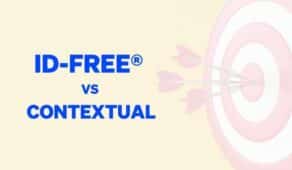How Dstillery Processes its Data
Dstillery ingests billions of data points daily. This includes website visitations, foot traffic, and app usage, which are processed into consumer behavior. With that data, individual devices (mobile and desktop) are scored in and out of specific audiences across different topics and then organized into categories. Dstillery audiences are up-to-date as audience segments are refreshed daily to deliver an unparalleled level of advertising effectiveness.
Although Dstillery audiences are continuously refreshed on a daily basis, and users are scored in and out of audiences across our different audience categories, users can still leave our data store/ecosystem at any time.
Dstillery has over 2,800 prebuilt audiences. Audiences are created using our AI models. These models score users in and out of specific audiences across different behaviors. As a result, valuable data is produced through graphs that reveal audience composition, demographics, locations, and the trail of sites visited.
How Users Score into an Audience:
To score means that the model analyzes the browsing history of the users who visited particular websites that revolve around the same topic. The AI model then uses that data to find other users with similar behaviors and interests.
Moreover, the AI model analyzes URLs to find similar browsing histories of individual users and search for common behavioral patterns. After those common web behavioral patterns are identified, the model uses that information to score users in and out of particular audiences.
How We Build a Pre-built Audience:
To have a better understanding of what a Pre-built audience is, let’s take a look at an example. “Toyota Vehicle Shoppers” is a Pre-built audience. This audience was built by putting together URLs that show users who are looking to buy a Toyota car or someone who is browsing anything related to Toyota vehicles. For example, www.olathetoyota.com, www.toyota.co.uk, www.toyota.com, and www.toyotacertified.com are fed into the model as input known as seed sets. The AI model will use these URLs to find users who have similar URLs in their web history. Users with these URLs in their web history are analyzed as users of interest. The model uses that information to find users with similar web patterns and interests, allowing it to score users into specific audiences. This process enables us to create accurate profiles of the users.
How Users Score out of an Audience:
Above, we described how to score into a specific audience. Now, let’s look at how the AI model scores a user out of an audience. Scoring out means that when users no longer demonstrate a particular pattern, they are scored out of an audience. For example, if the user’s web behavior has changed from buying a car to buying a jacket, the AI model would then score that user out of the “Toyota Vehicle Shopper” audience and into a “Jacket Lovers” audience.
As the AI model scores users in and out of the audience daily, another system – the data retention system looks at a user’s cookie history.
Data Retention Period for Audiences:
Data retention period across different audiences refers to how long users are retained in our scoring system. When users clear out their cookie history, we can no longer score that particular user into any audience because the AI model does not have any web history to analyze and score. Our data retention system checks users’ web history every day for 60 days. If the system doesn’t see the user’s web history, the system will delete the user from our database. Suppose/if we see that user’s cookies again, that user will return as a brand-new user. The AI model will analyze the web behavior of the new user and score them into a new audience.
Custom AI Audiences Built by First-Party Data to Create Specific Profiles for Brands:
Custom AI audiences are built by analyzing your first-party data to create a profile specific to your brand. When a user clicks on a pixel on the client’s website or web page, we automatically receive the user’s cookies. Our AI model then uses those cookies as model input to train the model. The AI model is trained to find users with similar web behavior to those who click the pixel. After the patterns in web behavior are identified, the AI model uses that information to score users into retarget audiences. The Custom AI Audience is one of our best audiences because it is 100% customizable to your brand.
The AI model rebuilds itself whenever users click on a pixel. By clicking on a pixel, new input is used to train the model even more. Let’s look at the data retention period for the Custom AI audience. The data retention period differs from the Pre-built audience because we look at the users who click on the pixel.
Once the pixel is placed on the client’s web page, we activate it to receive users’ cookies. When a user stops interacting with that pixel for 180 days, the user will be removed from the model input. Users get updated into the model input every time they interact with a pixel.
If a user doesn’t interact with a pixel for 180 days, that user will be removed from the model input. Furthermore, the behavioral history of that user will also be removed. Moreover, if the same user interacts with the same pixel on day 181, the system will look at it as a new user that clicks on the pixel.
What will happen to our first-party data if you create a custom AI audience and leave the pixel active without us terminating our contract with Dstillery?
As long as that pixel is active and the user constantly interacts with that pixel, the user will be a member of that Custom AI segment audience. Any data collected from that pixel older than two years will be removed from our system.
What will happen to our first-party data if the pixel gets deactivated?
Upon the deactivation of the pixel, after 14 days, our system will score out every device from the custom AI segment audience. If your custom AI audience is reactivated, our system will find the users that interact with the pixel placed on the web page.
To learn more about Dstillery audiences, please visit our products page.


